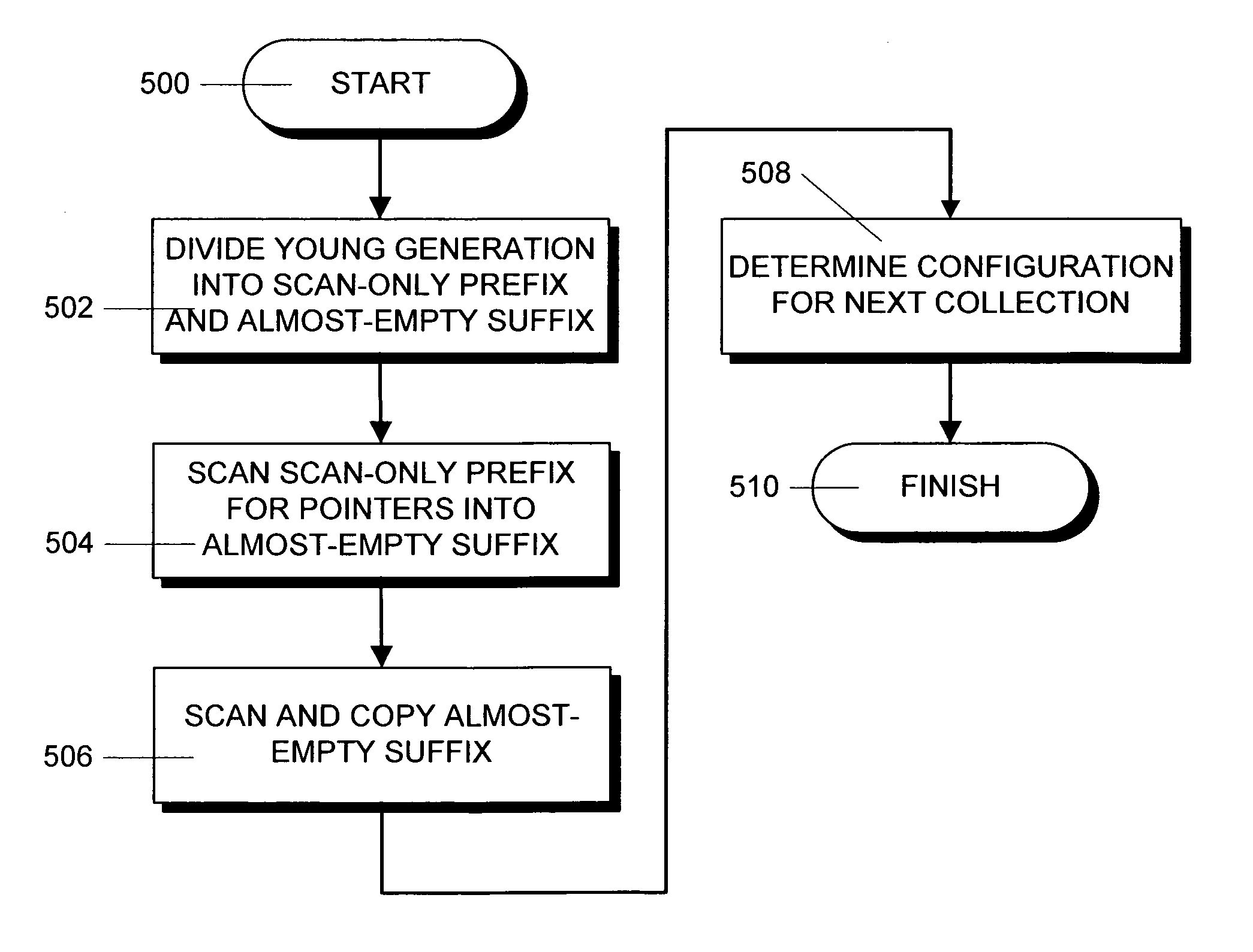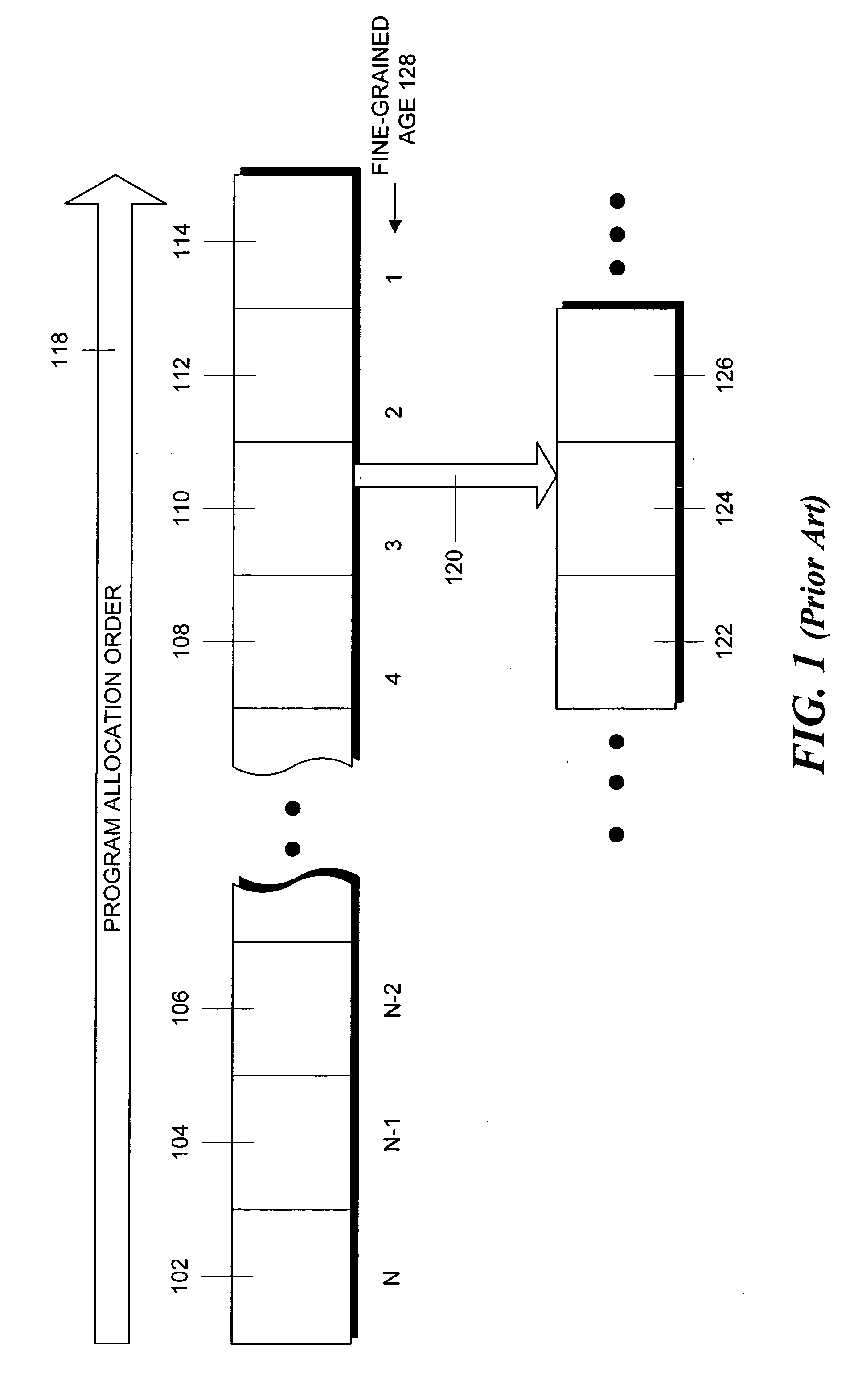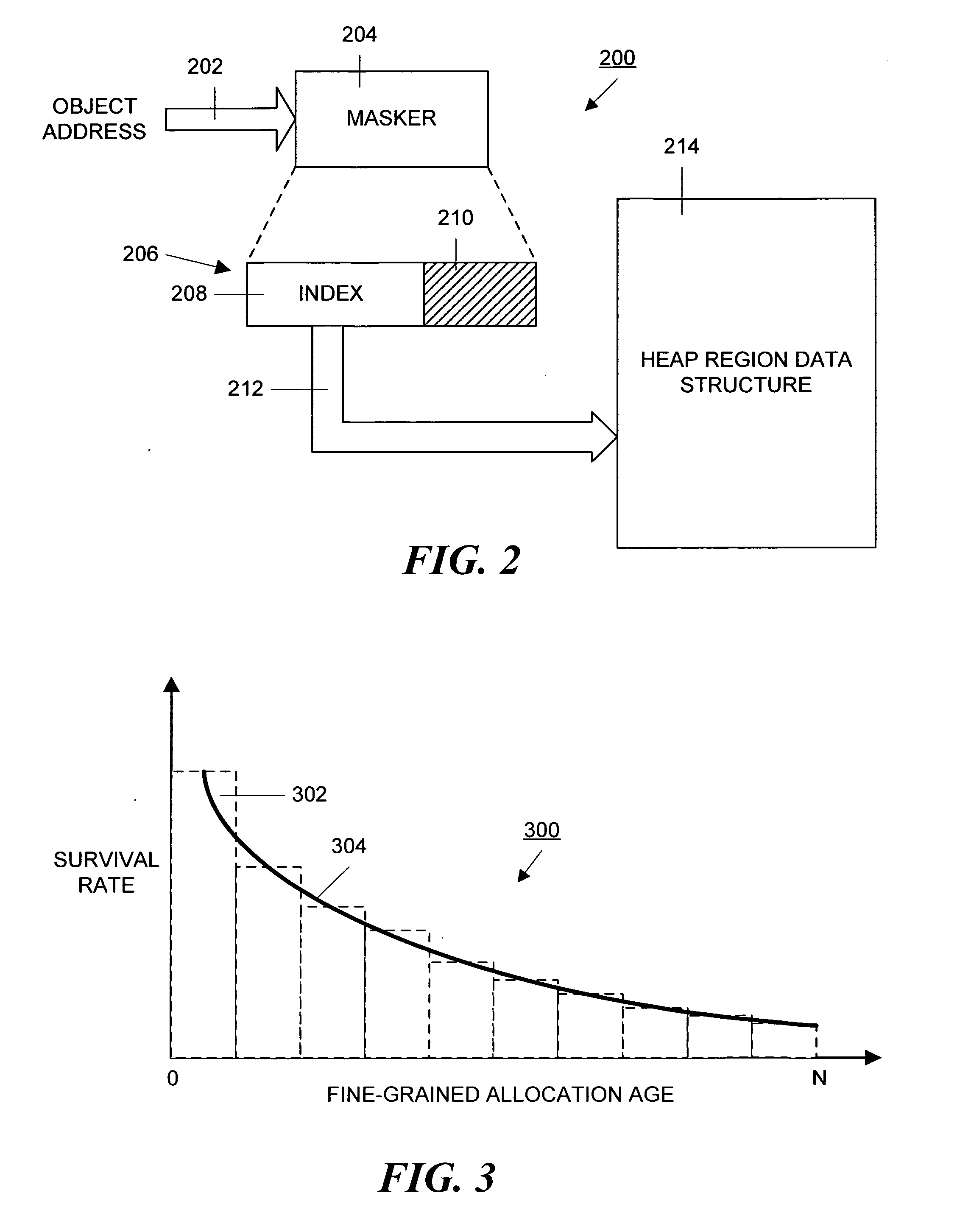Method and apparatus for decreasing object copying by a generational, copying garbage collector
a garbage collector and object technology, applied in the field of automatic reclamation, can solve the problems of long and unpredictable delays, techniques that are generally not suitable for real-time or interactive systems, and inability to meet the needs of real-time or interactive systems, and achieve the effect of increasing their effectiveness
- Summary
- Abstract
- Description
- Claims
- Application Information
AI Technical Summary
Benefits of technology
Problems solved by technology
Method used
Image
Examples
Embodiment Construction
[0020] In the discussion below, a particular garbage collector known as the “Garbage-First” garbage collector is used as an example of a generational, copying garbage collector. However, those skilled in the art would realize that the principles of the invention apply to other similar generational, copying collectors. The Garbage-First garbage collector is described in general in “Garbage-First Garbage Collection”, D. Detlefs, C. Flood, S. Heller and A. Printezis, Proceedings of the 4th International Symposium on Memory Management, pp. 37-48, Vancouver, BC, Canada 2004 and in greater detail in U.S. patent application Ser. No.10 / 985,447, filed on Nov. 11, 2004 by D. Detlefs, S. Heller and A. Garthwaite and assigned to the same assignee as the present invention, both documents are incorporated in their entirety by reference herein.
[0021] It is a common practice in garbage-collection literature to measure time in units of “bytes of program allocation.” Program allocation refers to mem...
PUM
 Login to View More
Login to View More Abstract
Description
Claims
Application Information
 Login to View More
Login to View More - R&D
- Intellectual Property
- Life Sciences
- Materials
- Tech Scout
- Unparalleled Data Quality
- Higher Quality Content
- 60% Fewer Hallucinations
Browse by: Latest US Patents, China's latest patents, Technical Efficacy Thesaurus, Application Domain, Technology Topic, Popular Technical Reports.
© 2025 PatSnap. All rights reserved.Legal|Privacy policy|Modern Slavery Act Transparency Statement|Sitemap|About US| Contact US: help@patsnap.com



